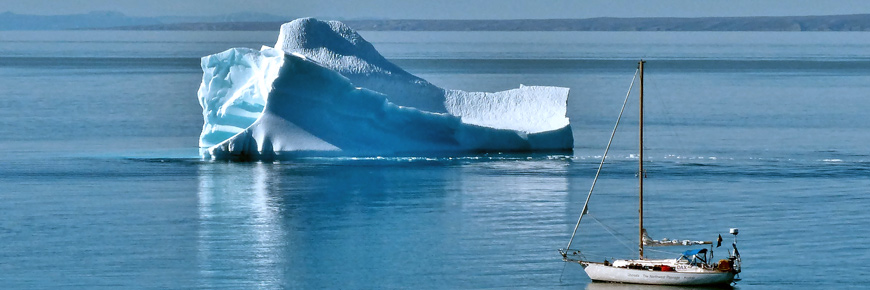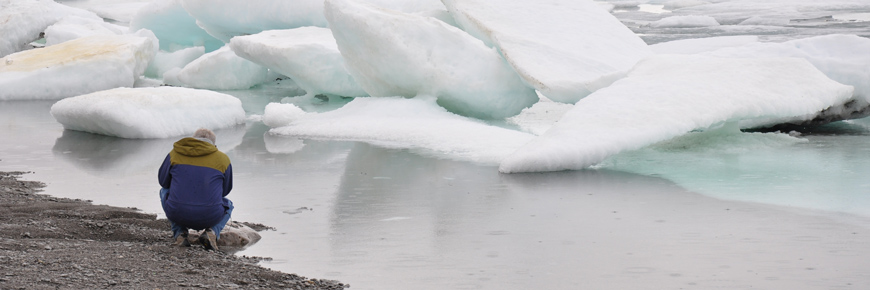
© Francine Mercier
Feasibility Assessment Report
A National Marine Conservation Area Proposal for Lancaster Sound: Feasibility Assessment Report
Submitted by: The Lancaster Sound National Marine Conservation Area Feasibility Assessment Steering Committee
February 2017
This is a summary of the report
To receive the full report in English, French or Inuktitut, please contact pc.medias-media.pc@canada.ca
Lancaster Sound is a natural and cultural seascape that is one of the most significant ecological areas in the world. It is critical habitat for species such as the polar bear, bowhead whale, narwhal and beluga whale. For Inuit living in the Lancaster Sound region—Tallurutiup Tariunga* as it is known locally—it is a home rich in culture and wildlife.
The idea of protecting the international, national and regional values of Lancaster Sound has been a recurring theme since the late 1970s. In 2009, work began in earnest as a federal –territorial – Inuit agreement launched a joint study to determine the desirability and feasibility of establishing a national marine conservation area in Lancaster Sound. This work was led by a Steering Committee composed of Parks Canada, the Government of Nunavut and the Qikiqtani Inuit Association (QIA).
This report summarizes the results of the feasibility assessment and of the Steering Committee’s work and recommendations.
Established under the Canada National Marine Conservation Areas Act, national marine conservation areas (NMCAs) are a type of marine protected area administered by Parks Canada. NMCAs are multi-use areas which balance protection and sustainable use through management as well as zoning, in cooperation with local people. Mineral and hydrocarbon exploration and development and ocean dumping are prohibited.
Under the terms of the Nunavut Land Claims Agreement, traditional harvesting rights of Inuit will continue to be upheld within the proposed NMCA. In addition, the establishment of an NMCA in Lancaster Sound will require an Inuit Impact and Benefit Agreement to be negotiated between Inuit and government. This agreement will cover the implementation of the financial, employment, training and educational requirements, the economic benefits, as well as the cooperative management of the NMCA.

Over the course of the feasibility assessment, the Steering Committee gathered information on ecological values, tourism opportunities, fisheries, marine transportation and potential hydrocarbon resources. It used Inuit Qauijimajatuqangit (Inuit traditional knowledge) alongside scientific knowledge to get a more complete understanding of the use and value of the area.
Consultations were conducted in the five communities adjacent to the NMCA proposal (Pond Inlet, Arctic Bay, Grise Fiord, Resolute Bay and Clyde River), with 32 community meetings attended by over 430 people. Input was solicited from regional and national stakeholders including industry and non-government organizations.
During the consultations, all five communities expressed significant support for the protection of the entire Lancaster Sound region and the establishment of an NMCA. The Steering Committee concluded that the establishment, development and operation of a national marine conservation area in Lancaster Sound can provide a number of ecological and social benefits, including:
- conserving the rich biodiversity and maintaining ecological processes and life support systems of the Lancaster Sound marine ecosystem for the benefit of marine species, Nunavummiut and Canadians
- establishing a collaborative relationship between Canada and Inuit that would guide current and future activities in Lancaster Sound to ensure the ecological and cultural viability of the area for future generations
- protecting and conserving species at risk and their habitats
- protecting the Inuit way of life and Inuit traditions through protection of the marine environment and marine wildlife food sources
- allowing all activities within the NMCA, including fisheries and marine transportation activities, to be managed in a more ecologically holistic manner
- protecting historical resources, such as shipwrecks and archaeological sites
- providing opportunities for visitors to experience and appreciate this environment
- encouraging ecological research and monitoring
- providing a level of resilience to the fragile Arctic marine ecosystem facing climate change
- encouraging ecologically sustainable economic opportunities in the region

Prior to governments making a final decision on a boundary, additional study of the hydrocarbon potential of the proposed Lancaster Sound NMCA is needed to provide governments and QIA with the necessary information to make an informed decision with respect to a final boundary. The Geological Survey of Canada is to complete its assessment by March 31, 2017.
The Steering Committee concluded that a Lancaster Sound NMCA is feasible and recommends a boundary approximately 109,000 square kilometres in size. The establishment of a national marine conservation area in Lancaster Sound is an investment worth pursuing for the benefit of present and future generations, and one that would produce a new relationship between Canada and Inuit that is in the national interest and of international significance.
The area is known by Inuit both as Tallurutiup Tariunga and Tallurutiup Imanga. Just prior to the August 2017 announcement, the Inuit and the Qikiqtani Inuit Association decided that the NMCA would be called Tallurutiup Imanga.
- Date modified :